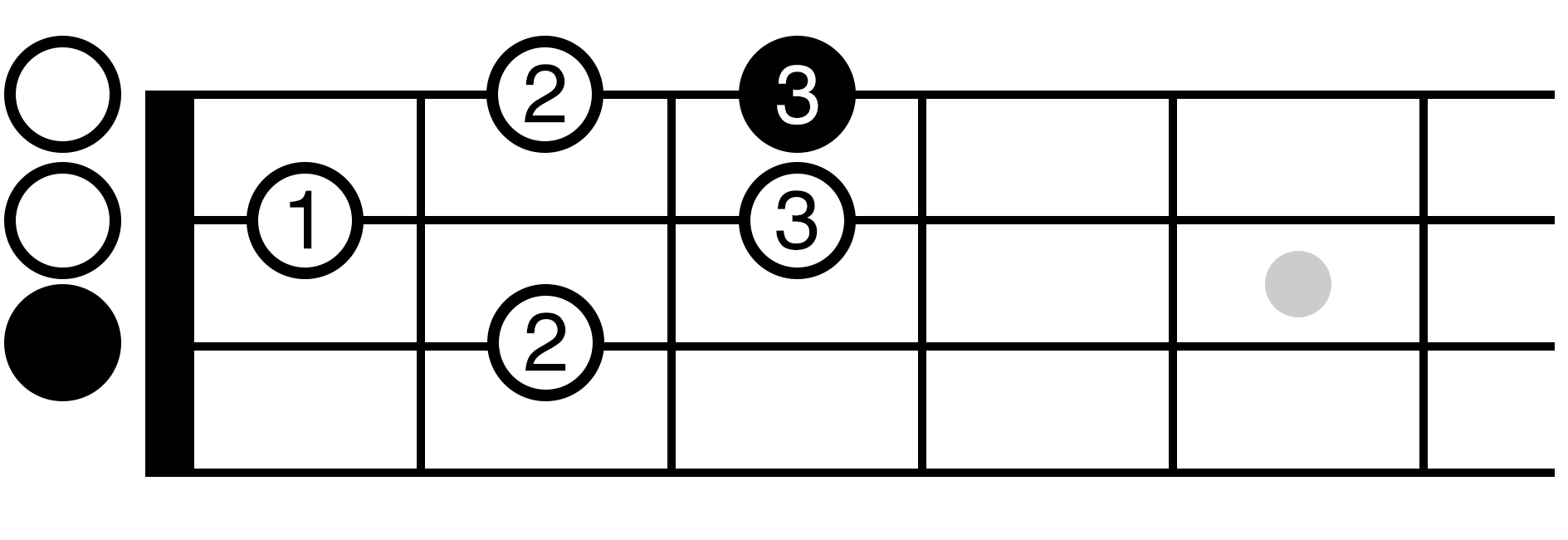Learning the ukulele fretboard unlocks a whole new way of experiencing the excitement and joy of making music on the ukulele.
When you understand the relationship of notes across the fretboard, you can do things like:
- Figure out where to fingerpick the melody of a song on the fretboard
- Discover how to build chords across the fretboard
- Riff and improvise solos across the fretboard (like in the blues or jazz)
But to do these things, it all starts with learning the C major scale on ukulele.
Today, you learn the first position of the C major scale (there are a total of five C major scale positions).
Watch the video to learn the C major scale on ukulele and keep reading to learn the music theory behind the scale.
Why Start With Learning the C Major Scale on Ukulele
Why start with the C major scale?
Why not the blues scale? Why not the pentatonic scale?
What you might not know about the C major scale is that it contains all natural notes.
Natural notes are the white keys on the piano or the first seven letters of the alphabet:
A, B, C, D, E, F, G
Since the C major scale contains all natural notes, this means if you learn C major scale positions across the fretboard, you automatically learn where all natural notes are across the fretboard!
If you know where the natural notes are, it’s easy to modify these “home base” positions later on to create scales in other keys by adding in sharps or flats.
How to Play a C Major Scale in Position #1 on Ukulele
Let’s build a C major scale now.
In a major scale, there are just seven notes (eight if you include the octave note).
It’s easy to make a major scale in any key with a simple formula based on whole step and half step intervals.
The major scale formula is:
whole, whole, half, whole, whole, whole, half
A whole step interval is a note two frets away, like from the 2nd fret of the C-string to the 4th fret of the C-string.
A half step interval is a note one fret away, like from the 4th fret of the C-string to the 5th fret of the C-string.
See an example of this in action by making a C major scale starting on the open C-string, which is a C note, known as the root note of the scale.

C Major Scale played on the open C-string of the ukulele
Now that you know the formula and how to make a major scale it’s more efficient to play the C major scale on the bottom three strings of the ukulele.

C Major Scale played on the bottom three strings in Position #1 of the ukulele
Pay specific attention where the notes are written on the music staff and where those notes are positioned on the fretboard.
From your fretting hand, assign the index finger to fret notes that fall on the first fret. Assign the middle finger to fret notes that fall on the second fret. Assign the ring finger to fret notes that fall on the third fret.
See this position indicated in the following fretboard diagram.

C Major Scale Position #1 ukulele fretboard diagram
Memorize this position and take it to heart. As you pluck each note of the position, say the note name out loud to put it to memory. By learning the C major scale, you’ll learn the natural notes across the fretboard.
If you know the natural notes, it’s easy to figure out where the sharps and flats are (more on that later).
A Note About the Top String
You might be wondering:
“Why isn’t the top g-string of the ukulele in this scale position?”
The main reason is because in standard tuning the top g-string is tuned higher than the middle two strings. This means you are unable to play the scale position linearly or from the lowest to highest note.
For this reason, we learn the scale positions on the bottom three strings and then incorporate the top g-string very easily later on.
You’re On Your Way to Mastering the Ukulele Fretboard
Memorizing and learning scales isn’t easy.
It takes energy to commit a scale to memory. Take your time and enjoy the process of learning.
By learning the C major scale, you learn where all the natural notes are on the fretboard, which provides a solid foundation for you to make various scales like the blues scale, pentatonic scale, bebop scale, and more in various keys across the fretboard.
When you’re ready, move on to learning the next C major scale position here.

